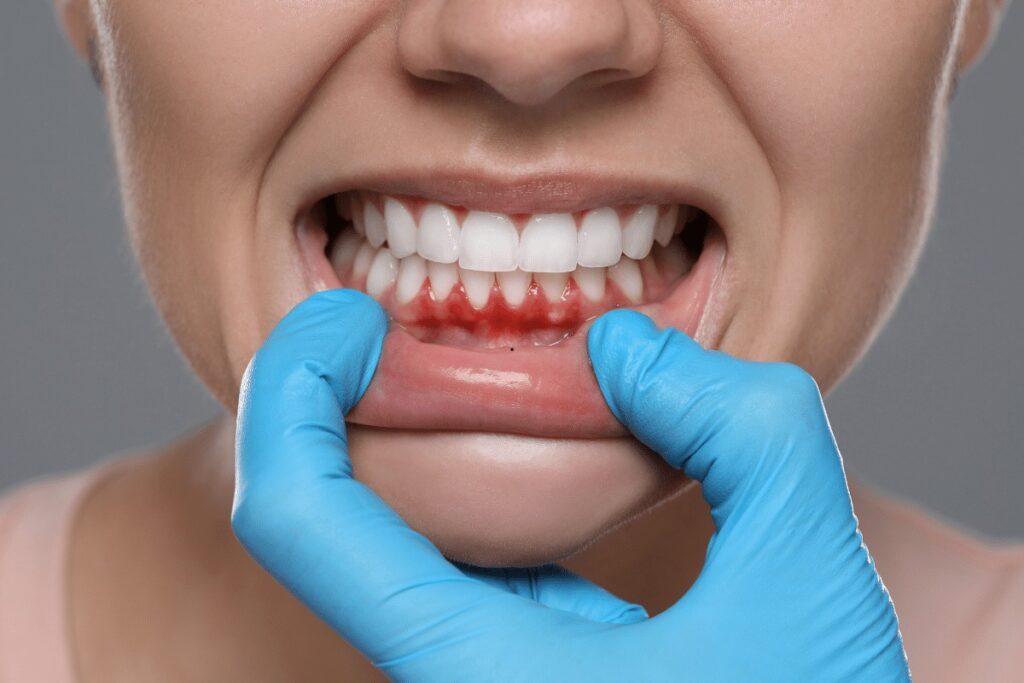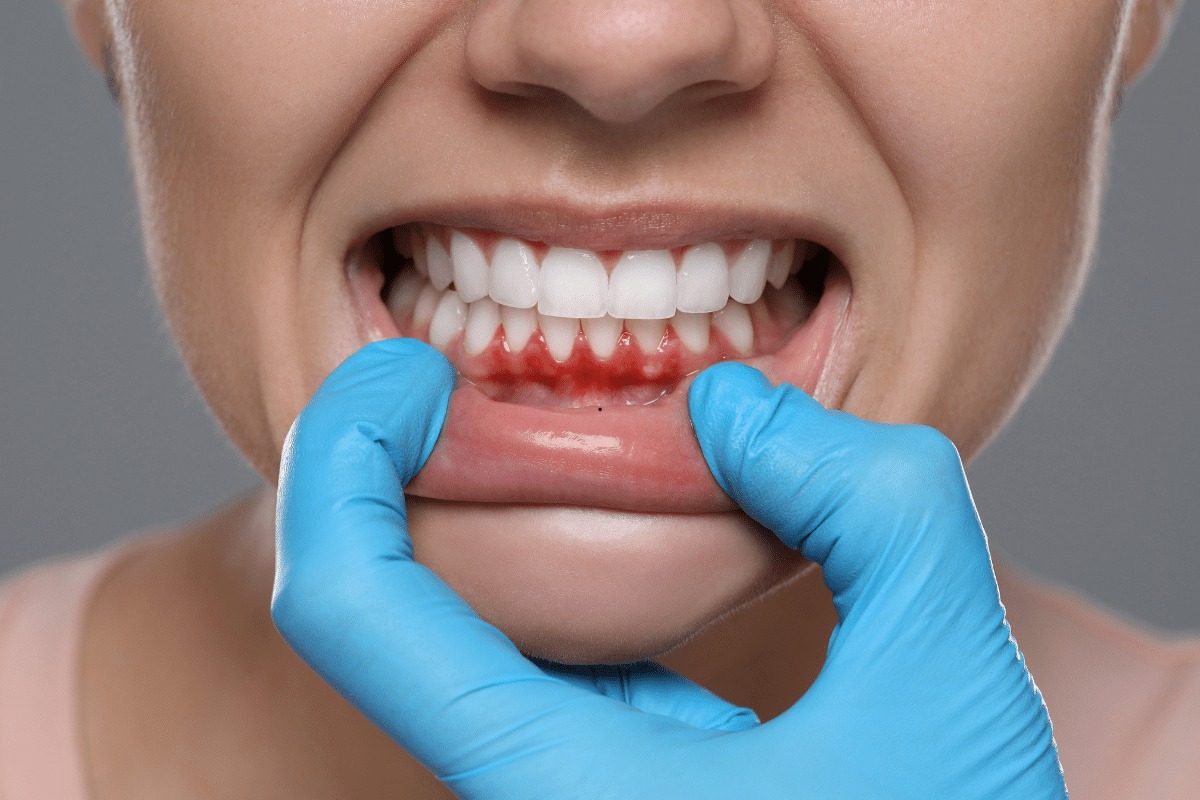A tooth abscess is more than a painful inconvenience it’s a sign of a serious bacterial infection forming inside the tooth or gums. This infection leads to a pocket of pus that builds up as your body’s immune system tries to fight invading bacteria.
Although the pain may sometimes fade temporarily, the infection itself does not heal on its own. Without proper dental care, bacteria continue to multiply beneath the surface, posing significant risks to your overall health.Many patients wonder whether a tooth abscess can heal naturally or if professional emergency dental care is required. The answer is simple: a tooth abscess cannot truly go away on its own. Let’s explore why, and what happens if treatment is delayed.
What Exactly Is a Tooth Abscess?
How a Tooth Abscess Develops
A tooth abscess begins when bacteria penetrate the inner structure of a tooth through decay, cracks, or gum disease. Once bacteria reach the pulp the soft tissue inside the tooth that contains nerves and blood vessels infection sets in. The immune system responds by sending white blood cells to attack the bacteria, resulting in pus formation.
As pressure builds, inflammation and pain intensify. The infection can spread from the pulp to surrounding bone, gum tissues, and eventually into other parts of the body if untreated.
Types of Tooth Abscesses and Where They Occur
A periapical abscess forms at the tip of the tooth’s root, usually due to untreated cavities or trauma.
A periodontal abscess develops in the gum tissues that surround the tooth, often from gum disease.
A gingival abscess appears on the surface of the gum and does not involve the tooth root or bone.
Regardless of type, each represents an active infection that will not heal without professional dental intervention.
Common Symptoms of a Tooth Abscess
Recognizing Early Warning Signs
The earliest and most noticeable symptom of a tooth abscess is severe, throbbing pain. This pain can radiate to the jaw, neck, or ear and may worsen when lying down.
Visible and Physical Changes
Swelling in the gums, cheek, or jaw is common, often accompanied by redness or a noticeable lump. Some patients develop sensitivity to hot or cold foods, making eating difficult.
Signs of Infection Spread
As the infection progresses, bad breath or a foul taste may occur from pus drainage. Fever, swollen lymph nodes, and fatigue indicate that bacteria have entered the bloodstream.
When It Becomes an Emergency
If you experience difficulty breathing, swallowing, or opening your mouth, the infection may have spread to deeper tissues. This situation is considered life-threatening and requires immediate emergency care.
Can a Tooth Abscess Go Away on Its Own?
The Temporary Relief That Misleads Patients
Sometimes an abscess bursts naturally, allowing pus to drain and temporarily easing the pain. This momentary relief can mislead patients into thinking the infection is gone. However, the bacteria remain inside the tooth or jawbone, continuing to multiply beneath the surface.
Why the Infection Persists
Because the source of infection decayed pulp or infected gum tissue is still present, the problem never truly resolves. Only a dentist can remove the infected tissue and disinfect the area completely.
The Hidden Dangers of Ignoring It
When untreated, an abscess can spread beyond the mouth. Bacteria can travel through the bloodstream to the neck, brain, or heart, causing life-threatening infections such as sepsis or Ludwig’s angina.
Why Antibiotics Alone Aren’t Enough
While antibiotics may reduce swelling and control symptoms temporarily, they cannot penetrate the tooth’s internal structure to eliminate the root infection. Lasting relief comes only from dental procedures that physically remove the infected material.
When to Seek Emergency Dental Treatment
Recognizing the Urgency
It’s essential to understand when a tooth abscess becomes an emergency. Persistent, severe pain that doesn’t respond to over-the-counter painkillers is an immediate red flag.
Warning Signs That Demand Immediate Attention
Swelling that extends to your face, jaw, or neck indicates the infection is spreading. A fever or difficulty swallowing are signs of systemic involvement. Pus discharge, foul taste, or facial asymmetry all suggest advanced infection.
Why Early Action Matters
Seeking care at the first signs of infection prevents complications such as tooth loss, bone damage, and systemic illness. Emergency dentists can quickly diagnose the source of the abscess and take steps to stop it before it worsens.
How Dentists Treat a Tooth Abscess
Draining the Abscess
The primary goal of treatment is to eliminate pus and relieve pressure. The dentist makes a small incision in the abscessed area to allow drainage. This immediately reduces pain and swelling while allowing the infection to begin healing. The area is then disinfected to remove residual bacteria.
Root Canal Therapy
If the infection originates within the tooth, root canal treatment is performed. The dentist removes the infected pulp, cleans the root canals thoroughly, and seals the tooth to prevent reinfection. A dental crown is usually placed afterward to restore strength and appearance. Root canal therapy can often save a tooth that would otherwise be lost.
Tooth Extraction When Necessary
When a tooth is too damaged to be restored, extraction becomes the safest option. Removing the tooth stops the infection from spreading further. Once healing is complete, replacement options such as implants or bridges can restore normal function and aesthetics.
Antibiotics and Aftercare
Antibiotics are prescribed to control any residual infection, especially if the abscess has spread or the patient has a weakened immune system. However, they are used as an additional measure, not as a substitute for dental procedures.
After treatment, the dentist provides instructions for care including maintaining oral hygiene, avoiding smoking, and eating soft foods while healing.
What Happens If You Delay Treatment
Progressive Bone and Tissue Damage
Delaying treatment allows bacteria to continue destroying bone and soft tissue around the infected tooth. This can lead to loss of tooth stability and eventual tooth loss.
Risk of Multiple Infections
As the infection spreads, it can create secondary abscesses in neighboring teeth or jaw areas. Chronic infections may lead to ongoing pain, facial swelling, and drainage through sinus tracts that form in the gums or skin.
Systemic Health Risks
Bacteria from a dental abscess can enter the bloodstream and affect distant organs. This can cause severe complications such as endocarditis (infection of the heart lining), pneumonia, or brain abscesses.
Emotional and Financial Impact
Ignoring symptoms can also have psychological and financial costs. What could have been resolved with a simple dental procedure may later require surgery, hospitalization, and tooth replacement all of which are far more expensive and distressing.
The Importance of Early Diagnosis
Prompt diagnosis and intervention not only stop pain but also preserve the natural tooth structure and protect your overall health.
Preventing Future Abscesses
Practicing Daily Oral Hygiene
The best prevention strategy begins at home. Brushing twice daily with fluoride toothpaste removes plaque and bacteria that cause decay. Flossing once a day helps clean areas that a toothbrush cannot reach.
Visiting the Dentist Regularly
Routine dental checkups every six months allow early detection of cavities, cracked teeth, or gum issues before they develop into abscesses. Professional cleaning removes tartar and reduces harmful bacterial buildup.
Addressing Dental Problems Immediately
Never ignore early signs of tooth decay, sensitivity, or gum bleeding. Promptly treating cavities and minor gum infections can prevent bacteria from reaching deeper layers where abscesses form.
Eating a Balanced Diet
A diet low in sugar and high in nutrients strengthens teeth and gums. Calcium, vitamin D, and phosphorus are essential for maintaining strong enamel and bone health. Reducing sugary snacks and acidic drinks lowers the risk of bacterial growth.
Avoiding Tobacco and Risky Habits
Smoking weakens the immune system and makes gums more prone to infection. Likewise, using teeth to open packages or chewing hard objects can cause cracks that invite bacteria. Practicing mindful habits protects both dental and overall health.
Conclusion
A tooth abscess will never heal on its own. While the pain may fade temporarily when the abscess drains, the infection remains active deep inside the tooth or gums. Without proper dental intervention, it can spread to surrounding tissues and cause irreversible damage.
Emergency abscess treatment whether through drainage, root canal therapy, or extraction is the only way to eliminate infection completely. These procedures not only stop pain but also prevent long-term complications like bone loss and systemic illness.
With timely professional care, most dental abscesses can be successfully treated, restoring comfort, oral health, and confidence. Regular checkups and good hygiene habits ensure that infections are caught early before they become emergencies.



